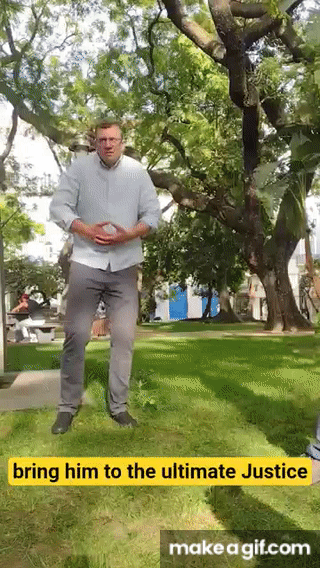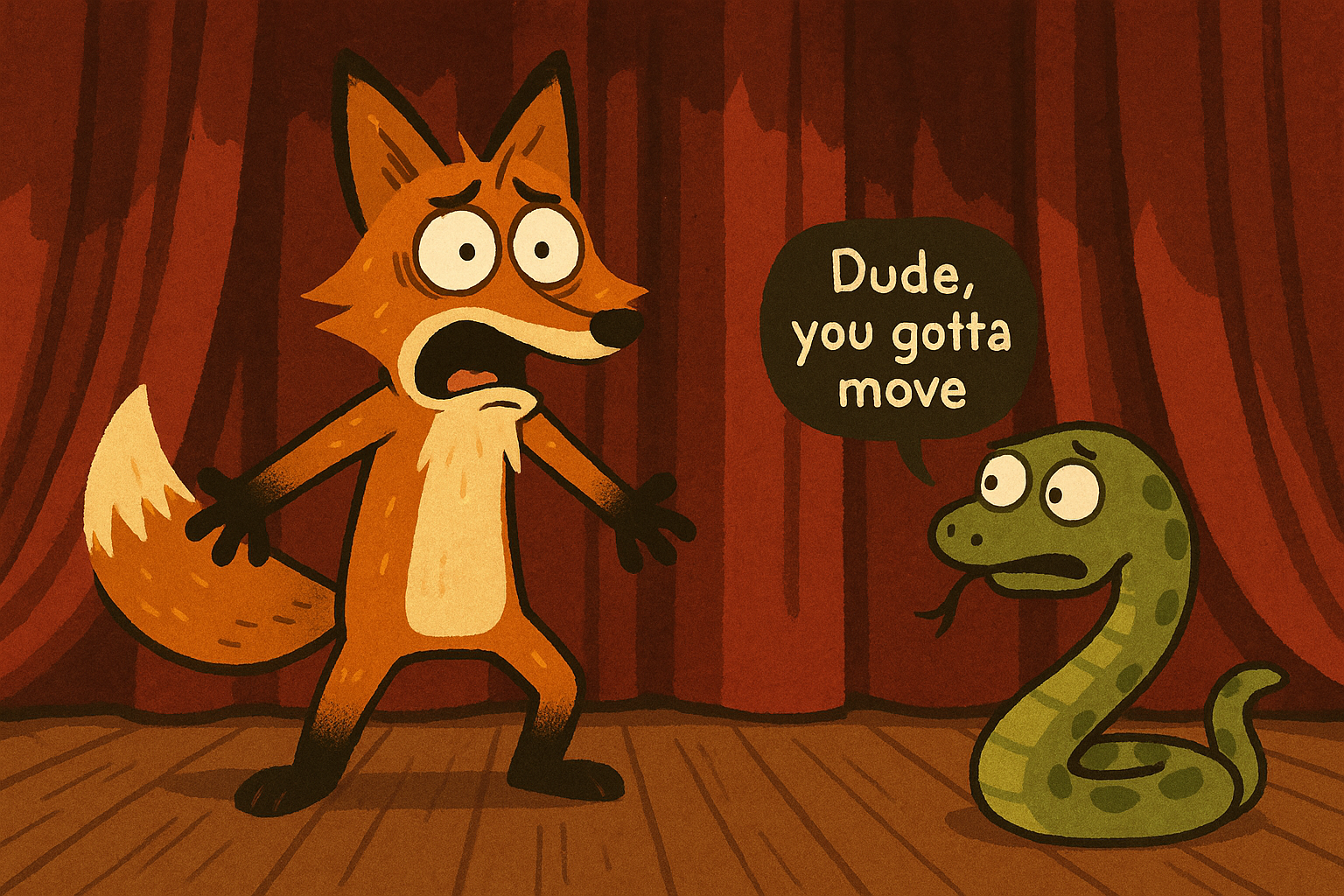You don’t need a perfect plan to move. Meaning often comes after you move on stage. If you give the audience a clear picture, you and your partners will discover why that picture matters. We’ve already talked about how movement helps land an ending and unstick a blank, and now let’s zoom in on where you stand, where you look, and how that quietly steers the scene.
Move first, discover why
You don’t have to know why before you take a step. A drift toward the window can become “I’m leaving,” “I need air,” or “That’s where the noise came from.” A sit on the arm of the sofa can become “I’m relaxed,” “I’m making myself at home,” or “I’m pretending I’m relaxed while I’m actually terrified.”
Let the ensemble and the audience read your move and co-write the reason with you.
Try: Start a scene, take three slow steps to a new spot, touch something in the environment, and say nothing for one breath. Let your partner label it. Accept it.
Upstage to anchor, not to dominate
Here upstage means becoming the audience’s anchor. When you upstage, you invite the audience to feel the scene through you. You’re saying, Watch from here; I’ll hold the frame.
Crucially, you can upstage even if your character has little power. A shy intern can become the anchor simply by stepping into the front of the stage and letting the moment land on their face. Don’t wrestle control from your partners, nor upstage repeatedly. You’re offering the audience a vantage point, and your partners a signal on how the conflict might be solved.
Try: As you move to the front, lift your eyeline to the imagined horizon. You can also downstage yourself and in that way upstage another character.

If you keep talking in place, the scene sinks
Two characters locked to one spot, swapping ideas, often reads like a meeting that never adjourns. Static bodies suggest a static story. A simple relocation signals that something is happening now.
When you upstage, don’t look backwards
Once you’ve taken focus, keep your attention oriented forward. If you physically upstage and then keep glancing back downstage to check in, you make your face unreadable to the audience and lose their attention. Face the audience’s angle in such a way as to allow the audience to see you, and your voice to be heard at the back too.
Small moves that change everything
- Trade levels: one sits, one stands.
- Change distance: a step closer for intimacy; a step away for coldness.
- Reframe the environment: open a door, switch on a lamp, look out a window.
- Offer a task: folding laundry, cleaning a wound, wrapping a present.
If you want to practice this, join our intermediate sessions.

Leave a Reply